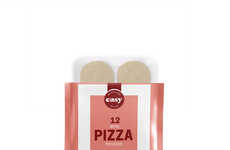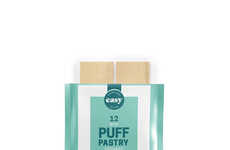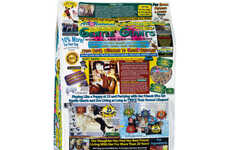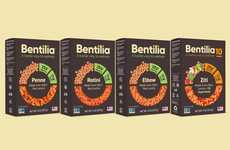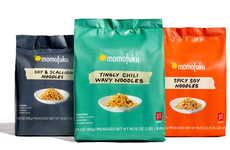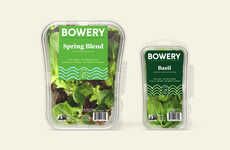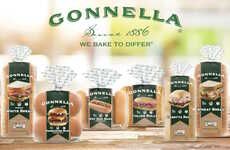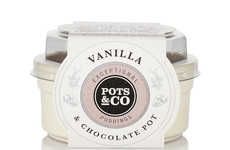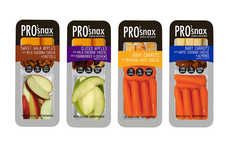
This Gluten-Free Food Company Uses Simplistic Two Dimensional Labels
References: graphasel & packageinspiration
In order to clearly convey its products, this gluten-free food company relies on simple branding, colorization and two dimensional labels.
The Hungary-based gluten-free food company 'Glutenno' provides consumers with various diet-sensitive alternatives such as flour mixes, pastas and biscuits. The team at 'Graphasel Design Studio' created the labels using a simple design atop a black and white background. Next, they added color-coded accents to notify the consumer about what the package contains. In addition, the design team incorporated symbolism to identify key ingredients such as flour, buckwheat, quinoa or rice.
The design for Glutenno's packages ensures that consumers are able to recognize what is contained inside by relying on colors and symbols -- eliminating the possibility of a language barrier. Each colorful package also grabs the attention of the consumer and uses two dimensional illustrations to avoid overwhelming the viewer.
The Hungary-based gluten-free food company 'Glutenno' provides consumers with various diet-sensitive alternatives such as flour mixes, pastas and biscuits. The team at 'Graphasel Design Studio' created the labels using a simple design atop a black and white background. Next, they added color-coded accents to notify the consumer about what the package contains. In addition, the design team incorporated symbolism to identify key ingredients such as flour, buckwheat, quinoa or rice.
The design for Glutenno's packages ensures that consumers are able to recognize what is contained inside by relying on colors and symbols -- eliminating the possibility of a language barrier. Each colorful package also grabs the attention of the consumer and uses two dimensional illustrations to avoid overwhelming the viewer.
Trend Themes
1. Minimalistic Packaging Design - Simplistic two-dimensional labels and color-coded accents are disrupting traditional packaging design by clearly conveying product contents.
2. Symbolic Ingredient Identification - Incorporating symbolism to identify key ingredients is a disruptive innovation opportunity in the food industry, enabling easier understanding for consumers.
3. Language Barrier Elimination - Using colors and symbols to communicate product content helps eliminate language barriers, creating a disruptive innovation opportunity in international markets.
Industry Implications
1. Food Packaging - The minimalist design approach and symbolic ingredient identification offer disruptive innovation opportunities in the food packaging industry.
2. Gluten-free Products - Applying minimalistic packaging design and symbolic ingredient identification can disrupt the gluten-free products industry by enhancing consumer understanding and brand recognition.
3. International Markets - By eliminating language barriers through color and symbol-based packaging design, disruptive innovation opportunities emerge in international markets for various industries.
1.2
Score
Popularity
Activity
Freshness


